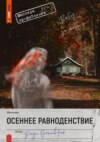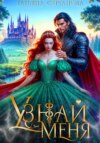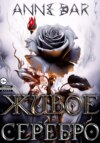Buch lesen: «Mr Thundermug»

MR
THUNDERMUG
CORNELIUS MEDVEI

Table of Contents
Epigraph
Chapter 1
Chapter 2
Chapter 3
Chapter 4
Chapter 5
Chapter 6
Chapter 7
Chapter 8
Chapter 9
Chapter 10
Chapter 11
Chapter 12
Chapter 13
Chapter 14
Chapter 15
Chapter 16
Acknowledgements
Copyright
About the Publisher
‘I could never look long upon a monkey,
without very mortifying reflections.’
William Congreve
1
ONE RAINY NIGHT not long ago, a curious report appeared in the late edition of our city's evening newspaper. Under the headline ‘MONKEY PROFESSOR DIES’, it was the obituary notice for an academic, one Dr Alphonsus Rotz. The article went like this:
DR ALPHONSUS ROTZ, who has died at the age of 60, was one of the most original zoologists of recent years. He will be best remembered for his fieldwork with primates.
After taking a degree in zoology, followed by a Ph.D. on ‘Posterior Pigmentation in the Mandrill’, Alphonsus Rotz was appointed Extraordinary Research Fellow at the National University, allowing him a generous stipend that provided the basis for a series of audacious research projects.
Probably the most famous of these projects was his 19-year period of unorthodox and, at times, controversial field research on the silver-maned baboons of the Ethiopian savannah. He went there with a party of graduate students, which he was supervising on a summer project. At the end of the summer his students returned home, but Rotz decided to stay. Left alone, he extended the theory of total immersion fieldwork, already practised widely by forward-thinking anthropologists. He became part of the baboon colony, living in a cave in the rocks, sharing their diet of roots and insects and taking part in their courtship rituals. Years later, Dr Rotz recalled in an interview how he had gained the creatures' trust so completely that baboon mothers would give him their offspring to suckle when they went out hunting.
But Dr Rotz's uncompromising approach to field-work had its drawbacks. Cut off as he was, the project leaders heard from him less and less frequently, and eventually Rotz lost all contact with the academic establishment. Assuming he was dead, the university stopped paying his stipend.
However, Dr Rotz was not dead, and he had even been contributing sporadically to a journal published in Addis Ababa. The back numbers of this publication give an idea of the work he was engaged in among the baboons. At first he was interested in routine questions, such as the animals' diet and etiquette, and the significance of the baboon in local folklore. Later articles contained outlines for a theory on the origin of language, and a detailed study of baboon vocal cords.
After nineteen years Dr Rotz left the savannah abruptly and returned home, to the astonishment and delight of his colleagues. He was unkempt and incoherent, and he brought with him only a small package containing his journals and a few mementos – a lock of pungent-smelling hair and a greasy photograph of a baboon baring its teeth. It was never fully explained why he had chosen, after all this time, to break off his research and come home. All Dr Rotz would say was that he had left for ‘personal reasons’.
Only at this point in the article did Dr Rotz's – admittedly tenuous – connection with our city become clear. When he returned from Africa, his former colleagues were naturally pleased to see that he was still alive, but having once stopped his stipend the university authorities were reluctant to start paying it again, and so Dr Rotz left to take up the position of visiting professor of zoology at the Central University of our city. The obituary continued:
DURING THIS TIME he published a series of papers which synthesized his findings and his theories from his work among the baboons. One of these papers gained particular notoriety in academic circles. In it he described how he had run a kind of hedge school for baboons with the purpose of identifying the most intelligent animals at an early age. He had worked with one unusually gifted female over a period of several years and eventually succeeded – so he claimed – in teaching the animal to speak. The appendix to this paper contained a lyrical account, quite unsuitable for an academic essay, of their long discussions of German Romantic poetry, sitting on a rocky outcrop in the moonlight, overlooking the boundless savannah.
After some deliberation the university authorities agreed to publish this paper, but in the storm of controversy that followed its appearance, they must have regretted their decision. When Dr Rotz proposed a further article entitled ‘Some thoughts on Homo-baboonus’, which was to consider the possibility of cross-breeding between humans and baboons, they turned him down without hesitation.
Dr Rotz had his new paper published privately, but after this it was almost impossible for him to find another job in a university. When his visiting professorship came to an end he returned to his home town, where he worked in a primary school. He taught arithmetic, geography and, when no other teachers were looking, Customs of the Great Apes. This made him very popular with the children. His standing rose within the school, and eventually he married the headmistress.
The obvious happiness which this marriage brought him, and his fruitful association with the Primate Society, made the last years of his life a period of quiet productivity. It was during this period that he invented the pongoid exfoliator, a device for removing unwanted skin from the feet of gorillas and chimpanzees.
At the time of his death, Dr Rotz was on an expedition in Brazil, sponsored by the Primate Society. He was leading a team of researchers investigating one of the largest macaque colonies of the Orinoco when he went missing early last week. The exact circumstances of his death are still unclear, as his body has not been recovered. However, remnants of clothing found in the spot where he disappeared indicate that he was probably eaten by a jaguar.
He is survived by his headmistress; there were no children.
Few people stop to buy the evening paper on a rainy night, and few of them read as far as the obituaries, which appear on the same page as the standing apology for errors and the chess problem, so the number of people in our city who learnt of Dr Alphonsus Rotz's passing was probably very small. I myself know about the obituary only because I was working on the Evening News at the time. The editor made a point of showing it to me, because he had the idea that I had once studied at the Central University myself.
As I read the obituary, an absurd picture came to me of Dr Rotz chalking up irregular verbs on a rock-face while a troop of baboons clustered attentively round his feet. The obvious conclusion was that Dr Rotz was an eccentric who had been turned by nineteen years of isolation and the rigours of an unfamiliar climate into an out-and-out fantasist. And yet the singlemindedness with which he pursued his academic interests was somehow at odds with this thesis – not to mention his mysterious disappearance among the macaques of the Orinoco, which seemed such a fitting conclusion to a singular life.
I made some enquiries at the Central University, but the few academics who admitted to having known Dr Rotz seemed incapable of agreeing on the most basic details about him. One elderly professor remembered him having a long white beard, while another showed me a photograph of Dr Rotz at a departmental dinner, dark-haired and clean-shaven. There appeared to be no point in investigating the matter further; in any case, I had other assignments to deal with. The obituary was published and forgotten, and I put the whole thing out of my mind.
Later, though, when the first shocking reports about Mr Thundermug began to circulate, I realized I had been fortunate to read that obituary. For the appearance in our city first of Dr Rotz, like a voice crying in the wilderness, and then of Mr Thundermug, the walking vindication of his wildest theories, struck me as being at the very least an extraordinary coincidence. In fact, I was sure at first that the two cases must be linked, like outbreaks of a disease which appear at first to be isolated but are invariably traced to the same source.
I never found any evidence to prove a connection, but I had the idea of presenting the obituary of Dr Rotz, together with all the information I have (mixed with a necessary amount of speculation) about Mr Thundermug, in the hope that one case might shed some light on the other. I don't present this story as a scoop, but rather as a case history, of the kind popular among brain doctors and criminologists. And speaking of criminology, while I was assembling these notes I was given a folder of intriguing photographs by a friend in the Police Department. They appear to have been part of a dossier of evidence – it seems the authorities had been keeping an eye on Mr Thundermug for some time. These photographs are hardly works of art, but when I examined them I noticed that they corroborated various details of my story, and so I have included a selection at relevant points in the text.
2
THIS IS A GREAT CITY, but it was once even greater. Its ancient walls are evidence of this: a massive sinuous rampart, each of its million bricks stamped with the name of its donor. Even today the confusion of shops and shacks and tower blocks and temples and electric cables that is the modern city scarcely spreads beyond the line of the old walls. In some places it has even withdrawn. On the road out of town you might pass through suburban districts of houses, or even through open fields; then suddenly one of the great gates looms up at the end of a street, or you turn in under the shadow of the wall itself – only then do you realize that you have still not crossed the limits of the old city.
The city stands on the bank of a great river, which flows down through the whole country. Its upper reaches are famous for the beauty of their scenery, for foaming torrents plunging through narrow gorges, but here the river is too wide to be lovely A bend in its course brings it in directly under the city walls. The narrow strip of land between the walls and the bank is crowded with warehouses, wharves and jetties.
On the other side of the city a mountain rises sharply from the foot of the walls. It is covered with beech and chestnut woods, and considered to be at its most beautiful in autumn, when the red and yellow leaves on its slopes are visible, like a conflagration, from every quarter of the city.
Despite its fortifications, the city has been fired, flooded, sacked and looted many times in its history, and the great walls enclose a perplexing jumble of buildings: cracked flyovers carrying traffic above ancient shrines, air-raid shelters converted into shopping centres, glassy skyscrapers growing out of the rubble of entire districts of flattened houses, unhampered by planning regulations. Within the walls, virtually the only piece of the old fabric that remains intact is the crisscross network of its streets, the straight avenues that run for miles between the gates. These avenues are lined with spreading plane trees whose branches meet across the road. In summer, when the trees are in leaf, it is quite dark underneath, so that in a car you have the curious sensation of driving under water.
The sections between the main streets are crammed with houses and shacks in various stages of disintegration, and riddled with narrow lanes that wind in every direction. To venture down one of these lanes is to join an unending stream of traffic, taxis and bicycles and pedestrians, negotiating your way past a succession of obstacles: past makeshift food stalls, card players at tables on the pavement, old women dozing in chairs, and through the milling crowds of spectators that gather round them. It is easy to get lost here: the lanes and junctions are like so many miles of tangled knitting, and all jammed with the same obstructions, swarming with the same crowds and decorated with the same embellishments of plant-pots and slop-buckets, open manholes, trailing vines and telephone cables.
Down one of these lanes that run crazily between the houses, in front of a heavy wooden door decorated with carvings of flowers, ridged and pitted and shiny with age, a monkey sits on the worn stone step. Beside him is a small pile of melon seeds, which he is cracking one by one between his teeth. The ground at his feet is littered with shells. He has the same air of absorption in his task as the stallholders frying dumplings or the gangs of card players. Leaning back against the door, he glances up occasionally at the stream of passers-by, but they pay no attention to him. An interested person could easily identify him as a baboon from his mane and the shape of his head, although he is unusually big for a baboon.
His heavy, chiselled face is rather like that of the stylized beasts carved in stone that guard so many doorways in this city; perhaps that is why no one pays him any attention. His long dog's muzzle and whiskery cheeks recall those dark portraits of Victorian grandees with their lugubrious expressions and mutton-chop whiskers.
This is his portrait: his head and shoulders are draped in a mane of thick hair that covers his upper body like a cape, the kind worn by a cyclist in the rain, or by Sherlock Holmes. He has small dark eyes set together under a battering-ram forehead, which gives him an intense, concentrated expression, as if he is grappling with some philosophical problem. Powerful jaws open to reveal a set of surprisingly small teeth, and no lips. On the side of his head turned towards us, half covered by the hair, is an ear shaped like a human's, but far more mobile.
Below the mane his belly and back legs taper away, so that he seems top heavy. His tail is slightly ridiculous: rounded like a piece of rope, with a thick tuft of hair at the end, it sticks up out of the small of his back, revealing his brick-red backside. Between the scrawny legs his thin pink willy hangs down like a hand-grip on an underground train. His paws are perhaps the most remarkable feature of all – almost human hands in miniature, with four delicate fingers and a thumb; but the fat, padded palms with their deep wrinkles and the thick hairs that cover even the backs of the fingers can only be those of an animal.
He cracks another melon seed between his teeth and spits out the shell. Across the lane a little boy, whose mother is buying dumplings at one of the stalls, stares at him. The baboon bares his teeth. ‘What are you looking at?’ he growls. The little boy continues to stare in fascination. The baboon sighs, cracks another melon seed and begins to scratch his balls.
Der kostenlose Auszug ist beendet.










